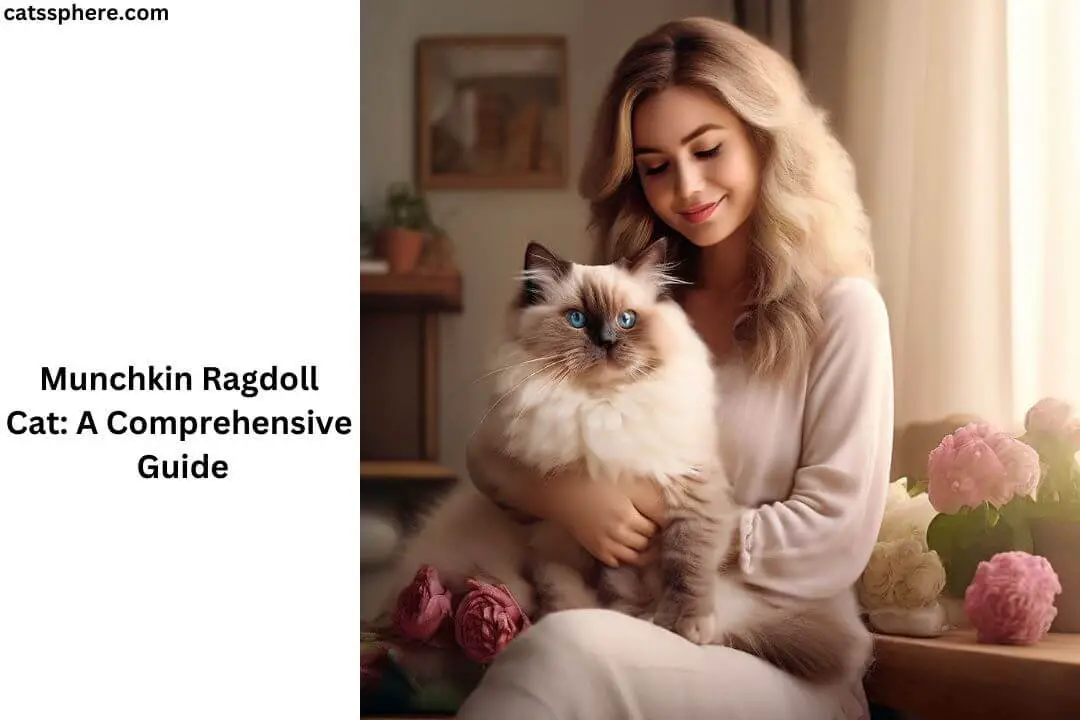Introduction
So, you’re intrigued by the Munchkin Ragdoll cat? You’re not alone! These charming felines combine the best traits of two beloved breeds—the Munchkin and the Ragdoll. In this article, we’ll dive deep into everything you need to know about these adorable cats. From their history and physical traits to care tips and more, this guide has you covered.
History and Origin
The Origins of Munchkin Cats
The Munchkin cat’s history is relatively recent. Discovered in Louisiana in the 1980s, these cats are known for their short legs, which result from a natural genetic mutation. Despite their small stature, Munchkin cats are playful, energetic, and full of life.
The Origins of Ragdoll Cats
Ragdoll cats, on the other hand, have been around since the 1960s. Developed by breeder Ann Baker in California, Ragdolls are large, affectionate cats known for their striking blue eyes and silky coats. They get their name from their tendency to go limp when picked up, much like a ragdoll.
The Fusion: Munchkin Ragdoll Cats
The Munchkin Ragdoll cat is a delightful fusion of these two breeds. This hybrid combines the Munchkin’s short legs and the Ragdoll’s plush coat and gentle nature, resulting in a cat that’s as unique in appearance as it is in personality.
Physical Characteristics
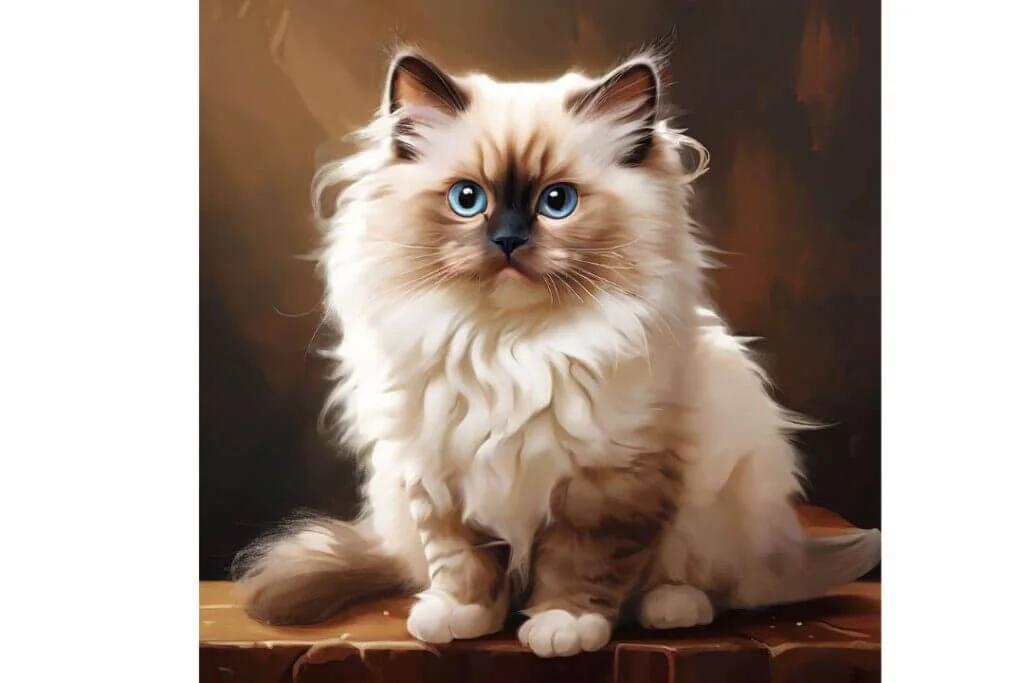
General Appearance
Munchkin Ragdoll cats are medium-sized, with the Munchkin’s distinctive short legs and the Ragdoll’s robust body. Their faces often display the expressive, soulful eyes typical of Ragdolls, making them irresistibly cute.
Coat and Colors
These cats boast a luxurious coat that can come in various colors and patterns, including colorpoint, bicolor, and mitted. Their fur is typically semi-long, requiring regular grooming to keep it looking its best.
Unique Traits
One of the most striking traits of Munchkin Ragdoll cats is their short legs. This doesn’t hinder their mobility but gives them a distinctive, almost cartoonish appearance. Their laid-back nature and willingness to go limp when held make them a joy to cuddle.
Personality and Temperament
General Personality Traits
Munchkin Ragdoll cats are known for their sweet, friendly disposition. They are affectionate and love being around people, often following their owners from room to room. These cats are also intelligent and curious, always keen to explore their surroundings.
Social Behavior
These felines are highly social and thrive on interaction. They get along well with children and other pets, making them an excellent addition to multi-pet households. Their gentle nature makes them particularly good companions for kids.
Interaction with Other Pets
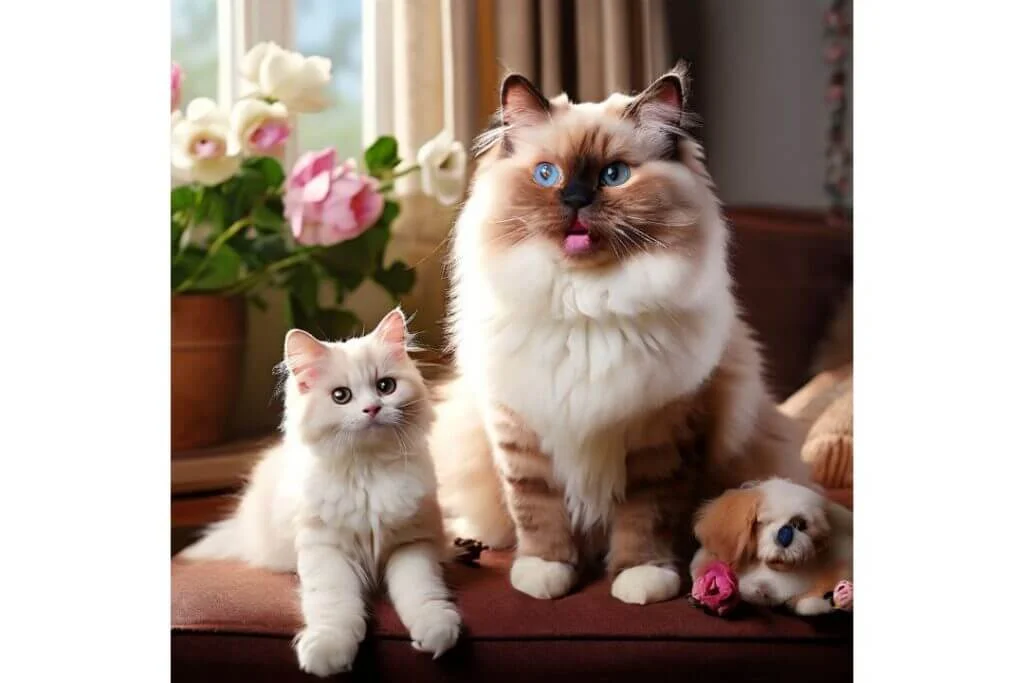
Munchkin Ragdoll cats are generally very tolerant of other animals. Whether you have dogs, other cats, or even smaller pets, these cats adapt well and are usually quite sociable. Proper introductions and supervised interactions help ensure harmonious relationships.
Care and Maintenance
Grooming Needs
Due to their semi-long fur, Munchkin Ragdoll cats require regular grooming. Brushing them a few times a week helps prevent matting and reduces shedding. Regular grooming sessions also provide an opportunity to check for any skin issues or parasites.
Dietary Requirements
Feeding your Munchkin Ragdoll a balanced diet is crucial for their health. High-quality cat food that provides all necessary nutrients is essential. These cats are prone to obesity, so monitoring their diet and providing measured portions is important.
Exercise and Activity Levels
Despite their short legs, Munchkin Ragdoll cats are quite active. They enjoy playing and need regular exercise to stay healthy. Interactive toys and climbing structures can help keep them engaged and fit.
Health Considerations
Common Health Issues
Like all breeds, Munchkin Ragdoll cats can be prone to certain health issues. Common problems include obesity, joint issues due to their short legs, and heart conditions. Regular veterinary check-ups are essential to catch and manage any potential health problems early.
Preventative Care
Preventative care includes regular vaccinations, flea and tick prevention, and dental hygiene. Routine vet visits help keep your cat in optimal health and allow for early detection of any issues.
Lifespan
With proper care, Munchkin Ragdoll cats can live between 12 to 15 years. Ensuring they have a balanced diet, regular exercise, and routine veterinary care can help maximize their lifespan.
Training and Behavior
Basic Training Tips
Training a Munchkin Ragdoll cat is relatively straightforward due to their intelligence and eagerness to please. Positive reinforcement, such as treats and praise, works well when teaching them new commands or tricks.
Litter Box Training
Litter box training is typically easy with these cats. Providing a clean, accessible litter box and showing them where it is will usually suffice. Maintaining a consistent routine helps reinforce this behavior.
Handling Behavioral Issues
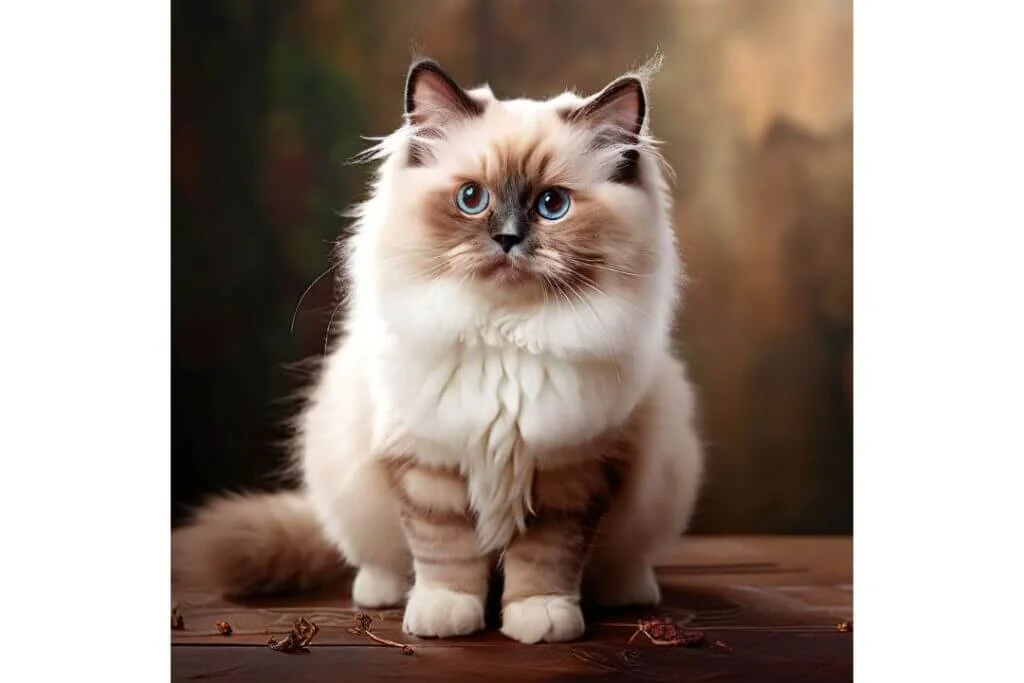
Behavioral issues, such as scratching furniture or aggression, can often be managed through training and providing appropriate outlets for their energy. Scratching posts and regular playtime can reduce unwanted behaviors.
Living with a Munchkin Ragdoll Cat
Ideal Living Conditions
These cats adapt well to various living environments, whether in a spacious house or a cozy apartment. Providing ample play space and interactive toys can help them stay happy and healthy.
Adapting to Apartment Living
Munchkin Ragdoll cats are well-suited to apartment living due to their moderate activity levels and social nature. Ensuring they have enough stimulation and vertical space, like cat trees, can keep them entertained in smaller spaces.
Outdoor vs. Indoor
While these cats can enjoy supervised outdoor time, they are generally safer and healthier as indoor pets. Indoor living protects them from external dangers such as traffic, predators, and diseases.
Adoption and Buying Tips
Finding Reputable Breeders
If you decide to buy a Munchkin Ragdoll cat, finding a reputable breeder is crucial. Look for breeders who prioritize the health and well-being of their cats over profits. Visiting the breeder and seeing the conditions the cats are kept in can provide insights into their practices.
Adoption Process
Adopting a cat from a shelter or rescue organization is a wonderful option. Many purebred and mixed-breed cats need loving homes. The adoption process typically involves an application, home visit, and adoption fee.
Red Flags to Watch Out For
Be wary of breeders who have multiple litters available at all times, offer a choice of any kitten without screening, or fail to provide health clearances. These can be signs of unethical breeding practices.
Costs and Budgeting
Initial Costs
The initial cost of acquiring a Munchkin Ragdoll cat can be significant, especially if purchased from a breeder. Costs can range from $500 to $1500 or more, depending on pedigree and breeder reputation.
Ongoing Expenses
Ongoing expenses include food, litter, grooming supplies, and veterinary care. Budgeting for these expenses ensures you can provide the best care for your cat throughout its life.
Budgeting Tips
Setting aside a monthly budget for pet expenses can help manage costs. Pet insurance can also be a good investment to cover unexpected medical expenses.
Feeding and Nutrition
Best Types of Food
High-quality commercial cat food, whether dry, wet, or a combination, is suitable for Munchkin Ragdoll cats. Look for foods that list meat as the first ingredient and avoid those with excessive fillers.
Feeding Schedule
Establishing a consistent feeding schedule helps regulate your cat’s digestion and prevent obesity. Adult cats typically eat twice a day, while kittens may need more frequent feedings.
Treats and Supplements
Treats should be given in moderation to avoid weight gain. Supplements, such as omega-3 fatty acids, can be beneficial for their coat and overall health, but always consult your vet before adding supplements to their diet.
Playing and Entertainment
Best Toys for Munchkin Ragdoll Cats
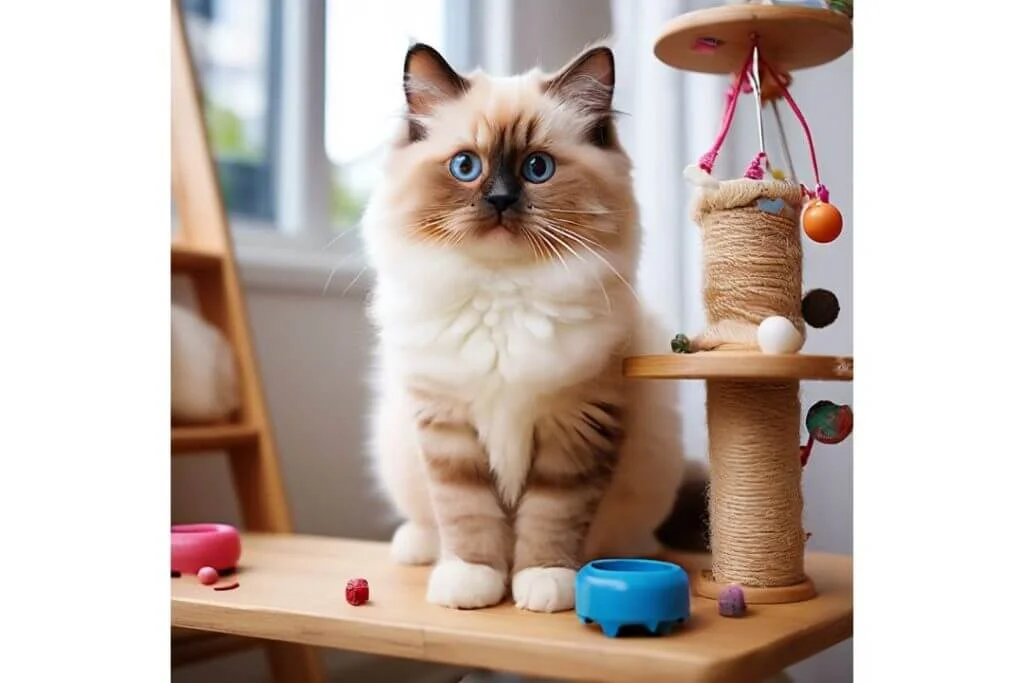
Interactive toys that stimulate their hunting instincts, such as feather wands and laser pointers, are excellent choices. Puzzle toys can also provide mental stimulation and keep them entertained.
Mental Stimulation
Engaging your cat’s mind is just as important as physical exercise. Puzzle feeders, training sessions, and interactive play can help keep their brains sharp and prevent boredom.
DIY Toys and Activities
You don’t have to spend a lot of money on toys. DIY options like cardboard boxes, paper bags, and homemade catnip toys can be just as entertaining for your cat.
Grooming and Hygiene
Brushing and Bathing
Regular brushing is essential to keep their coat free of mats and tangles. Bathing is generally not necessary unless they get particularly dirty, as cats are excellent self-groomers.
Nail Clipping
Trimming your cat’s nails every few weeks prevents overgrowth and reduces the risk of them scratching furniture or people. Use proper cat nail clippers and ensure you don’t cut too close to the quick.
Dental Care
Dental hygiene is often overlooked but is crucial for your cat’s overall health. Regular brushing with cat-safe toothpaste and providing dental treats or toys can help maintain their oral health.
Can Ragdoll Cats Eat Raw Chicken? A Comprehensive Guide In 2024
Can Ragdoll Cats Be Black? A Ultimate Guide In 2024
Traveling with Your Cat
Preparing for Travel
Preparing your cat for travel involves acclimating them to their carrier well in advance. Make the carrier a positive space by placing treats, toys, and a comfortable blanket inside.
Tips for Car and Air Travel
For car travel, ensure your cat is secure in a carrier to prevent distractions. For air travel, check the airline’s pet policy well in advance and ensure you have all necessary documentation and supplies.
Reducing Stress During Travel
Keeping your cat calm during travel can be challenging. Using calming sprays or pheromone diffusers in their carrier, and ensuring they have familiar items, can help reduce stress.
Conclusion

In summary, Munchkin Ragdoll cats are a delightful blend of two popular breeds, offering a unique combination of physical traits and personality. They make wonderful pets due to their affectionate nature, adaptability, and charming appearance. Proper care, including regular grooming, a balanced diet, and routine veterinary visits, ensures they lead healthy, happy lives.
FAQs
How much exercise does a Munchkin Ragdoll Cat need?
Munchkin Ragdoll cats require regular playtime and mental stimulation to stay healthy. Daily interactive play sessions are ideal.
Are Munchkin Ragdoll Cats good with children?
Yes, they are generally very gentle and tolerant, making them excellent companions for children.
What is the average lifespan of a Munchkin Ragdoll Cat?
With proper care, these cats typically live between 12 to 15 years.
How often should I groom my Munchkin Ragdoll Cat?
Regular grooming is essential, with brushing recommended several times a week to keep their coat healthy and free of mats.
Do Munchkin Ragdoll Cats have any breed-specific health issues?
They can be prone to obesity and joint issues due to their short legs. Regular vet check-ups are important to monitor their health.

